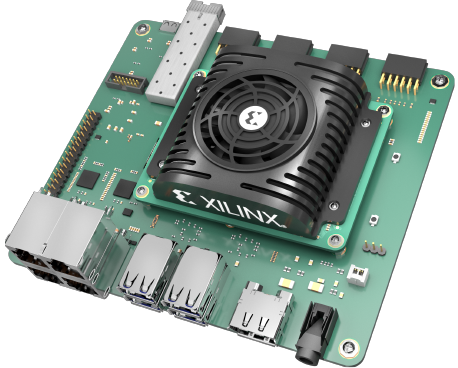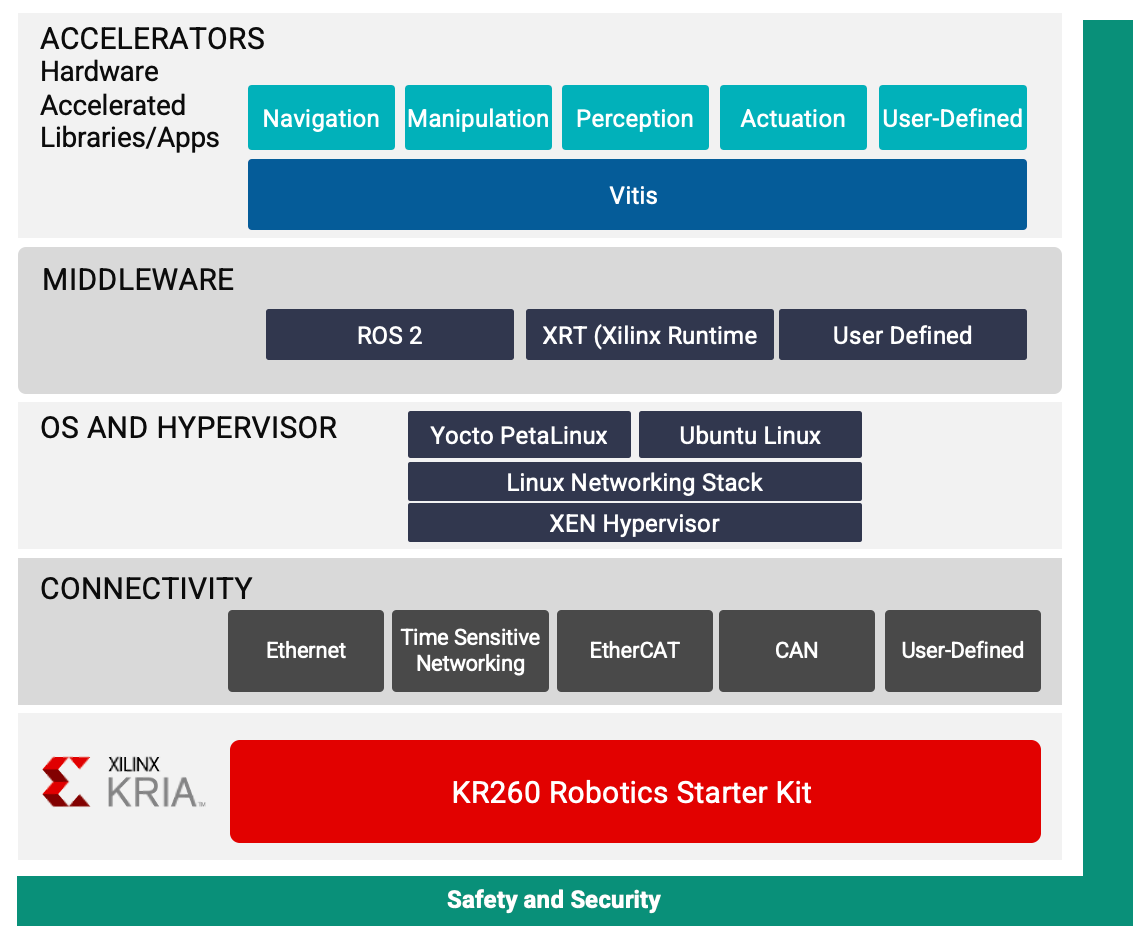MicroZed Chronicles: Kria Robotics Starter Kit
May 20, 2022
Editor’s Note: This content is republished from the MicroZed Chronicles, with permission from the author.
Over the last few months, we have examined robotics on Kria with the Kria robotics stack (KRS) which enables ROS 2 to be deployed on Xilinx heterogeneous SoCs. KRS provides developers the ability to deploy ROS 2 and also accelerate ROS 2 nodes using Vitis. In a recent project, I demonstrated KRS ROS 2 running on the Kria Vision and AI Starter Kit to control a TurtleBot 3 Waffle.

I was excited to see the announcement of the Kria Robotics Starter Kit. This starter kit is based on the same Kria System on Module as the Kria Vision and AI Starter Kit. One difference between the two is the provision of the second connector on the SOM. This beaks out the gigabit serial links from the SOM for use on the Kria Robotics Starter Kit carrier card.
Readers of this blog will be familiar with the benefits of using heterogeneous SoCs in certain applications. The high deterministic and low-latency capabilities of applications implemented in programmable logic really comes to the forefront in robotics and industrial applications where safety of people, environment, and production are paramount. Of course, programmable logic interfacing is also flexible and provides any-to-any capabilities. This flexible and configurable PL IO interfacing, combined with the wide range of interface standards supported in the processing, provides developers a wide range of interfaces to choose from when implementing solutions or starter kits.

The Kria Robotics Starter Kit provides its users with a range of interfacing solutions that enable the KRS kit to be used by robotics developers regardless of the robotic element they are working on. Robots are system of systems from motor controller and joint positioning to vison systems and actuator drive and control. Each system requires its own unique interfaces. To aid roboticists in their development, the Kria Robotics Starter Kit offers the following interfaces across the 480 pins provided by the Kria SOM.
- DisplayPort 1.2
- Four USB 3.0
- Dual Ethernet connected to the processor system
- Dual Ethernet connected to the programmable logic
- Four Pmod interfaces
- 1 SFP+ cage
- RPI header
- SLVS-EX Rx
- USB UART / JTAG
This provides the roboticist with the ability to implement high-performance industrial vision interfaces along with real-time networking support. Application-specific interfaces like RS485, CAN, H-Bridges etc. can be implemented using the Pmod or RPI interfaces.
The dual Ethernet provision on the PL enables roboticists to implement real-time standards like Time-Sensitive Networking and Ethercat. SLVS-EX or Scalable Low-Voltage Signaling with Embedded Clock is an image sensor interfacing standard developed by Sony to support high resolution, high frame rate image sensors. SLVS-EX uses gigabit serial links in place of Sub-LVDS to reduce the number of lanes from approximately 30 to 8 when 4.75 Gbps SERDES are used in place of 1 Gbps sub LVDS. The SFP+ cage can also be used for the development of interfacing of 10 GE vision or high-speed networking off board.
Of course this is just the hardware layer, and the Kria Robotics Stack enables developers to leverage ROS2 to rapidly create robotic applications using a framework they are familiar with.

It is not by coincidence that the Kria Robotics Stack and Kria Robotics Starter Kit are both shortened to KRS. KRS and its support for ROS 2 enables developers to be able to accelerate elements of the ROS 2 algorithms and also integrate sensor interfaces and processing within both the PS and PL of the Kria SOM. This thereby reduces the overall cost, size, power and size of the solution.
I spoke to Chetan Khona, Director of Industrial, Vision, Healthcare & Sciences at AMD-Xilinx to learn a little more about the Kria Robotics Starter Kit. (Youtube link)
As Chetan says in the in the video, the Kria Robotics Starter Kit is targeted at industrial applications in addition to robotic applications. The interfaces provided on this board are suitable for a range of industrial applications including industrial communication and control, machine vision and of course robotics.
Like the previous Kria Vision AI Starter Kit, the Kria Robotics Starter Kit will launch with a range of applications that can be downloaded and deployed, including one from Adiuvo for the Turtlebot.

Overall, I like the Kria Robotics Starter Kit and think it is a great companion to the Kria Vision and AI Starter Kit. The Kria Robotics Starter Kit has a much wider range of interfaces, especially those which are more commonly used in industrial, medical and scientific applications. This makes the Kria Robotics Starter Kit ideal if your application needs a range of interfaces for prototyping with the Kria while you develop your own custom Kria carrier card.
Xilinx Xclusive Blog
-
- AMD-赛灵思公布 2021 自适应计算挑战赛开发者赛道获胜者
- Apr 28, 2022
-
- 启动您的引擎:Versal Premium 系列引入 AI 引擎,“加速”信号处理
- Apr 20, 2022
-
- 基于自适应计算的尖端音视频与广播方案亮相 ISE 2022
- Apr 06, 2022
Adaptable Advantage 博客
Xilinx AI 和软件博客
-
- Vitis AI 2.0 现已推出!
- Jan 20, 2022
-
- 连获“双奖”,Xilinx AI 团队实力绽放国际视觉顶会
- Oct 08, 2021